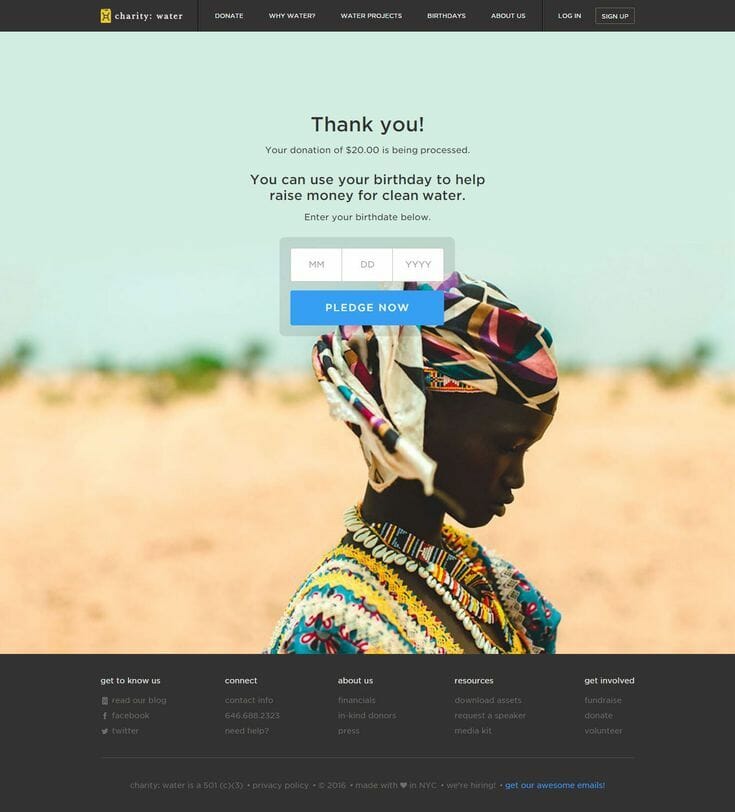Does this sound familiar? You’re on the Board or staff of a nonprofit organization. You love the work it does. Yet when you’re at a party or in a social situation and somebody asks “What does your organization do?”, you’re at a loss for words.
It’s embarrassing–and it’s a wasted opportunity. That person asking you about your organization could become your most devoted volunteer, or your most loyal donor, if only you could get them interested.
And you can.
A while back, we talked about how you can create a nonprofit elevator pitch–a short summary of what’s attractive about your organization–that will make anybody ask you, “Please, tell me more!”
That’s better–but is it the best you can do? No!
Start the Conversation In Your Pitch
“No matter how quick and painless, a pithy pitch is still a pitch,” as Dixie Laite puts it. When someone asks you, “What does your nonprofit do?”, what you really want is not to “pitch” someone but have a conversation with them. It’s like pitch and catch. It goes both ways.
So, one step in the right direction is to put conversation-starters right there into your pitch.
- Laite suggest a “Do do” approach. “When someone asks you what you do, instead of going into your little canned song and dance, you instead ask them a question, as in ‘Do you know…?'”
The question gets them thinking about a problem, so that your organization can then offer a solution. For instance, if you’re an organization for youth, you might say, “Do you know that thousands of high school students are going hungry this summer because they can’t get lunch at school?”
- Tim David offers a four-step approach to make sure your conversation partner’s interest is piqued and continues to grow.
- Break their expectations. Answering a question with a question (the “do do” approach) is one way of making the conversation come alive. So is making a joke. David calls this “giving them a verbal slap in the face” and “waking them up.” But you don’t have to be aggressive–just startling.
- Ask a problem question. If you ask them “Do you know” and their response is “Yes, that bothers me too,” you’re building rapport–and you’re on the right track.
- Go to the noddable. “A noddable is an inspirational or wise quote that is so catchy and agreeable, it gets just about everyone nodding.” Again, this builds rapport (on the theory that you’ve just read their mind, and great minds think alike!)
- Finish with the curiosity statement. Here’s where you answer the “What do you do?” question, but in a way that invites even more questions. (In other words, you’ve just given an elevator pitch for your elevator pitch, and now they’re interested in hearing the real thing!)
Beyond the Elevator Pitch
Nonprofits can learn a lot from the “do do” approach and from the “elevator pitch for your elevator pitch.” If you practice either or both of these approaches, it gets you beyond just making a statement. When you ask questions, build rapport, and get permission for a longer conversation, you’re already way ahead.
 Yet I fear that even with the best intentions, many of us will still memorize our lines and give a performance. I agree when Tim David cautions:
Yet I fear that even with the best intentions, many of us will still memorize our lines and give a performance. I agree when Tim David cautions:
If you get the sense that it’s turning into a commercial instead of a conversation, then you’re doing it wrong. Stop pitching and ask another question. You should only be doing 15-20% of the talking.
What should you be doing the rest of the time? Listening.
Better Yet, Have a Scripted Dialogue
When a person asks you about your nonprofit organization, you have a question you want to answer, too. That is: “Could this person become a supporter?”
So, one reason you’re asking questions is to keep the other person interested, and engaged, and nodding along. But the other is that you’re doing prospect research.
You’d like your conversation partner to walk away with an interest in finding out even more about your organization and, sooner or later, getting involved…
AND you’d like to walk away with some specific ideas about who they are, what they want to talk about, and what matters to them–specific enough you’d write notes about them in your donor database.
» So, when you talk with a stranger about your organization, you should have a loose script in mind. It should include the elevator pitch for your elevator pitch. It has to have a pitch full of conversation-starters.
But what will really help your organization cultivate that person as a volunteer and donor is the questions you ask about them.
You Can Get Help Asking The Right Questions
How will you learn to script your dialogue so it’s a valuable conversation for both partners? Helping you do that is a service we offer at Communicate! Consulting.
Email us to find out if we should be working together. Because there are complete strangers out there who could become your organization’s biggest fans. Let’s give them the opportunity.



